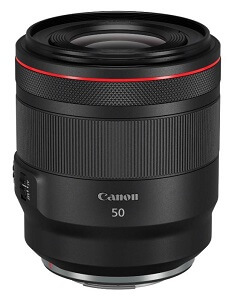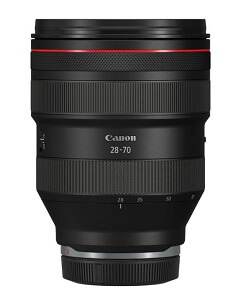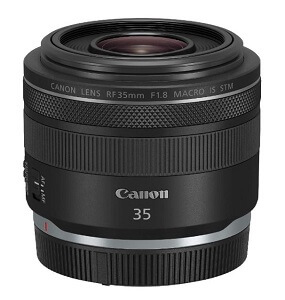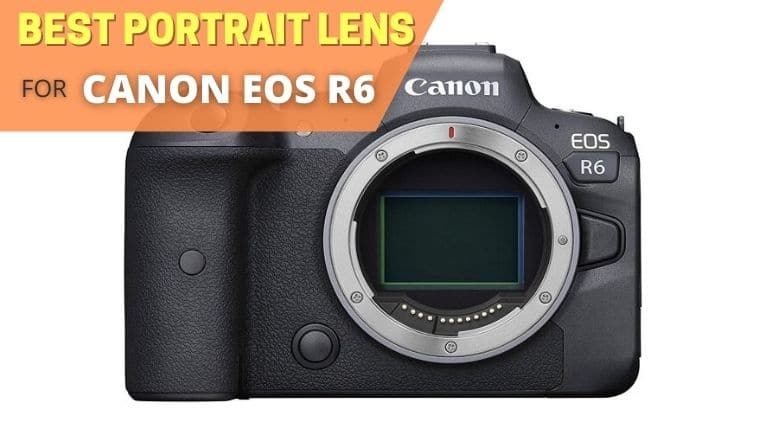- High Image Quality featuring a New 20 Megapixel Full-frame CMOS Sensor.
- DIGIC X Image Processor with an ISO range of 100-102400; Expandable to 204800.
- High-speed continuous shooting of up to 12 fps with Mechanical Shutter and up to 20 fps electronic (silent) shutter.
What is the best portrait lens for Canon EOS R6?
So you’re wondering which lens is best for portrait photography with your Canon EOS R6? Portrait photography is something we do on a regular basis, whether with friends, family or strangers. Many beginning photographers bought their first camera with the kit zoom lens and a portrait lens is often one of the first tools needed as an extra.
If you want to get good results, it will be necessary to use the right equipment. However, there are many models and choosing a portrait lens can be complicated because it depends on several factors.
To help you, in this article we’ll explain all the features you’ll need to consider when determining which portrait lens to choose for your Canon EOS R6.
How to choose the best portrait lens for my Canon EOS R6?
Here are some things to consider when choosing your portrait lens to go with your Canon EOS R6:
Fixed or zoom lens? Which focal length to choose? The focal length is an important criterion to determine which portrait lens to choose: a fixed focal length cannot zoom, and you will have to move to change the size of your subject on the image.
You must choose according to the type of environment where you intend to take portrait photos: outside (during a trip for example), in a concert hall, in a studio, during a wedding… A zoom lens is more versatile, allowing you to go from a wide angle to a standard or telephoto lens very quickly. Their negative points are that they are generally heavier and more expensive than a fixed focal length.
Although fixed focal lengths don’t offer as much versatility as a zoom lens, they still have many advantages: generally the image quality they provide is far superior to a zoom lenses, for a much lower price. A fixed focal length portrait lens also allows the use of very large apertures such as f/1.4 or f/1.8 which is impossible to obtain with a zoom lens.
The larger this aperture (i.e. the smaller the f/number), the more light the lens will let in on the sensor. It will allow to reduce the depth of field in order to isolate the photographed subject and to realize superb effects of bokeh (background blur).
A large aperture also helps reduce motion blur in dark environments. The choice between a fixed focal length and a zoom lens is above all a matter of compromise between image quality and versatility.
As with any photographic equipment purchase, choosing a portrait lens also depends on your budget. If you are just starting out in photography and want to learn about portraiture without breaking the bank, you may want to consider third-party lenses such as those from Tamron, Sigma and Samyang rather than the official Canon, Nikon or Sony lenses.
They are much affordable and generally offer very similar image quality. On the other hand, the build quality is generally better on the official lenses. If you are a very demanding photographer and are looking for exceptional image quality, I would still recommend investing in a lens from the same brand as your camera.
If you are not sure on what portrait lens to choose for your Canon EOS R6, this small selection is suitable for most portrait photographers.
Note: the product links in this article lead to Amazon.com
Summary
- Canon RF 50mm f/1.2L USM (Budget portraitl lens)
- Canon RF 28-70mm f/2L USM (Professional Portrait Lens)
- Canon RF 35mm f/1.8 Macro IS STM (Compact and light portrait lens)
- Useful accessories
- Conclusion
Here’s the Top 3 portrait lenses you should consider for your Canon R6:
Canon RF 50mm f/1.2L USM

Filter size: 77 mm
Very bright lens, the 50mm RF series allows to obtain high quality images and its high quality manufacturing makes it an excellent purchase despite its very high price. With a large aperture at f/1.2, pictures taken in low light are very successful. There is still a darkening at the corners. The minimum shooting distance is 40 cm and the minimum aperture is f/16.
The dive is excellent and homogeneous on all beaches. To make it so bright, the Canon RF 50mm f/1.2L USM, is made of 15 elements grouped into 9 groups. Its finish is the same as the others in the series, namely smooth black. There is also the very practical ring to set up and a manual or automatic focus selector. Another selector limits the focus from 80 cm to infinity. A USM motor ensures autofocus, which remains noisy. It’s embarrassing when using video. Another negative point is that there is no stabilizer for this lens.
- Fixed focal length, Lens with high image quality and bright f/1.2 aperture for the EOS R system
- Minimum focusing distance of 1.31 ft. /0.40M. Filter Size: 77mm
- A control ring for direct setting changes
_
Canon RF 28-70mm f/2L USM

Filter size: 95mm
This new 28-70mm is really THE zoom above all, from a technical point of view. The quality of the recorded images is very surprising. With a constant aperture at f/2, it reaches an exceptional speed even at low speeds. A minimum aperture of f/22 gives a nice depth and a very detailed image. At first glance, his weight may seem a little off. However, the grip remains stable once the zoom is installed on the Canon RP. The lack of a stabilizer becomes uncomfortable in low light. It is more difficult to use correctly. For manufacturing, it consists of 19 lenses divided into 13 groups.
Its satin texture repels dust. An easily accessible button blocks the zoom when transporting it. The minimum focus requires 39 cm and the AF is silent. Like the other lenses in the range, a ring for personalized use is placed on the lens, allowing use adapted to the habits and needs of each photographer. It can be considered as part of the professional objectives. Its price is also intended for professionals or amateurs with a BIG budget!
- Bright, constant f/2 USM zoom Lens
- L-series Lens with high image quality
- Control ring for direct setting changes
_
Canon RF 35mm f/1.8 Macro IS STM

Filter size: 52 mm
Compact lens, this 35 mm 305 g lens has a maximum aperture of f/1.8 and a minimum aperture of f/22. It allows a focus at 17 cm and offers a reproduction ratio close to 1:2. We obtain a quality bokeh and its optical stabilization system compensates up to 5 EV. An STM engine provides smooth transitions that are highly appreciated in video applications. It is also equipped with a ring to be set which is close to the one used for focusing. There can be confusion between the two despite their different finishes.
As with the other lenses in the range, the distance scale is displayed on the viewfinder. However, it has a vignetting with a large diaphragm aperture. The cheapest in the RF range, it has no waterproofing treatment. Its lenses are not in the L range but have undergone a Super Spectra treatment on the surface.
It is a lens that allows you to take sharp pictures and its versatility is appreciated. Very useful for street photos, portraits or close-ups, its small size makes it a very popular tool. It is delivered with a sun visor.
- Compact macro Lens with 0.5x Magnification Ratio
- Minimum Focusing Distance of 0.56 ft. ; 0.17M
- Control Ring for direct setting changes
_
☛ MORE PORTRAIT LENSES
- For other portrait lenses options, check this out: The best lenses for Canon EOS R6
_
Useful accessories for portrait photography
They are essential to make photos and videos. Whether it’s for transporting your equipment, stabilizing your camera or protecting your camera and lenses, accessories are far from being superfluous. But you have to choose them well if you want them to last.
Here is a small selection of must-have accessories to complement your lenses and your Canon EOS R6 if you want to do portrait photography:
Conclusion
To summarize, the important things to consider when looking for the best portrait lens for Canon EOS R6 are focal range, aperture and price. If you’re not sure which portrait lens to choose, you can also go to Flickr and search for examples of photos taken with the lens you are interested in, this will give you a good idea of its possibilities.
Another thing, if you are planning to do portrait photography while on vacation or travel, consider the weight and bulk of the lens. If the whole thing is too heavy or bulky and lacks discretion, you won’t want to bother with it and would rather just take your smartphone with you. You may also not want to risk damaging an extremely expensive lens.
And finally, perhaps the most decisive point about choosing the perfect portrait lens for your Canon EOS R6 will be if you need to get a portfolio of professional quality portrait photos (it may be your business or it may become your business who knows?).
Last tips: Remember to always focus on the eyes. And whatever portrait lens you choose, try to snap as much as you can, as it is often during the selection phase that you’ll discover the perfect picture. Most importantly, be always ready, as the magic in a portrait may only last for a short moment.







